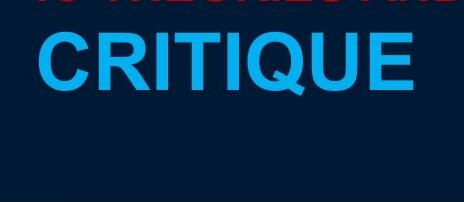Critique Template for a Qualitative Study
Critique Template代写 Week 6 Assignment: Application: Critiquing Quantitative, Qualitative, or Mixed Methods Studies (due by Day 7 of Week 7)
NURS 5052/NURS 6052
Week 6 Assignment: Application: Critiquing Quantitative, Qualitative, or Mixed Methods Studies (due by Day 7 of Week 7)
Date:
Your name:
Article reference (in APA style):
URL:
What is a critique? Simply stated, a critique is a critical analysis undertaken for some purpose. Nurses critique research for three main reasons: to improve their practice, to broaden their understanding, and to provide a base for the conduct of a study. Critique Template代写**格式
When the purpose is to improve practice, nurses must give special consideration to questions such as these:
- Are the research findings appropriate to my practice setting and situation?
- What further research or pilot studies need to be done, if any, before incorporating findings into practice to assure both safety and effectiveness?
- How might a proposed change in practice trigger changes in other aspects of practice?
To help you synthesize your learning throughout this course and prepare you to utilize research in your practice, you will be critiquing a qualitative, quantitative, or mixed-methods research study of your choice.
If the article is unavailable in a full-text version through the Walden University Library, you must e-mail the article as a PDF or Word attachment to your Instructor.
QUALITATIVE RESEARCH CRITIQUE
1.Research Issue and Purpose Critique Template代写
What is the research question or issue of the referenced study? What is its purpose? (Sometimes ONLY the purpose is stated clearly and the question must be inferred from the introductory discussion of the purpose.) Critique Template代写**格式
The paper addresses the issue of monopoly created through licensing and the tension it creates to the goal of consumer protection.
2.Researcher Pre-understandings
Does the article include a discussion of the researcher’s pre-understandings? What does the article disclose about the researcher’s professional and personal perspectives on the research problem? Critique Template代写**格式
The author does not give his own opinion but rather base his argument on the previous studies around the question. However, according to the general discussion of the paper, the writer implies that, licensing brings about the monopolistic tendencies in the medical practice and which as a result leads to hampering consumer protection in healthcare access.
3.Literature Review Critique Template代写
What is the quality of the literature review? Is the literature review current, relevant? Is there evidence that the author critiqued the literature or merely reported it without critique? Is there an integrated summary of the current knowledge base regarding the research problem, or does the literature review contain opinion or anecdotal articles without any synthesis or summary of the whole? (Sometimes the literature review is incorporated into the introductory section without being explicitly identified.)
The writer approaches the literature review beginning with old work around the occupational licensing to the most recent research. Generally, the review is relevant to the area of the study with most of them arguing for the monopoly created through occupational licensing. The literature has empirically explored the research question in the bid to prove its argument. However, he failed by just reporting the literature without critiquing them accordingly.
4.Theoretical or Conceptual Framework
Is a theoretical or conceptual framework identified? If so, what is it? Is it a nursing framework or one drawn from another discipline? (Sometimes there is no explicitly identified theoretical or conceptual framework; in addition, many “nursing” research studies draw on a “borrowed” framework, e.g., stress, medical pathology, etc.) Critique Template代写**格式
The research does not explicitly identify the conceptual framework of the research question.
5.Participants Critique Template代写
Who were the participants? Is the setting or study group adequately described? Is the setting appropriate for the research question? What type of sampling strategy was used? Was it appropriate? Was the sample size adequate? Did the researcher stipulate that information redundancy was achieved?
The research approaches the research qualitatively and uses theoretical analysis of the topic without the use of participants. The research uses the previous studies to base his argument.

6.Protection of Human Research Participants
What steps were taken to protect human research subjects? Critique Template代写**格式
Given that the research did not involve human participants, there was no protection of human research participants.
7.Research Design Critique Template代写
What was the design of the study? If the design was modeled from previous research or pilot studies, please describe.
The research design uses previous research conducted in support of its argument. The author starts by stating the existence of the monopoly as created by the occupational licensing in healthcare.
8.Data Collection/Generation Methods
What methods were used for data collection/generation? Was triangulation used? Critique Template代写**格式
The author described the research question theoretically without conducting the actual research and use of support literature.
9.Credibility Critique Template代写
Were the generated data credible? Explain your reasons.
The research concluded by giving the potential policy solution to the occupational licensing to enhance both equity and efficiency in the healthcare practice. The findings from the literature arguments are convincing and valid as they are based on the previous studies conducted on the topic and which were scientifically conducted.
10.Data Analysis
What methods were used for data analysis? What evidence was provided that the researcher’s analysis was accurate and replicable?
The research did not have data analysis as it generally based its argument on the previous study. The research failure to give actual data in support of the research question makes it not convincing enough as scientific research.
11.Findings Critique Template代写
What were the findings?
The author concluded that occupational licensing and regulation hurts by the creating monopolies in healthcare and overlapping of practice and access to patients for competing for health practices.
12.Discussion of Findings
Was the discussion of findings related to the framework? Were those the expected findings? Were they consistent with previous studies? Were serendipitous (i.e., accidental) findings described? Critique Template代写**格式
According to the research design and approach, the author was able to bring out the expected results which were correctly supported by the use of works of literature. The author did not describe any unexpected findings.

13.Limitations Critique Template代写
Did the researcher report limitations of the study? (Limitations are acknowledgments of internal characteristics of the study that may help explain insignificant and other unexpected findings, and more importantly, indicate those groups to whom the findings CANNOT be generalized or applied. It is a fact that all studies must be limited in some way; not all of the issues involved in a problem situation can be studied all at once.) Critique Template代写**格式
The research did not explicitly provide for the limitation of the study.
14.Implications
Are the conclusions and implications drawn by the author warranted by the study findings? (Sometimes researchers will seem to ignore findings that don’t confirm their expectations as they interpret the meaning of their study findings.)
The researcher provided for the solution to the argument based on the previous research.
15.Recommendations Critique Template代写
Does the author offer legitimate recommendations for further research? Is the description of the study sufficiently clear and complete to allow replication of the study? (Sometimes researchers’ recommendations seem to come from “left field” rather than following obviously from the discussion of findings. If a research problem is truly significant, the results need to be confirmed with additional research; in addition, if a reader wishes to design a study using a different sample or correcting flaws in the original study, a complete description is necessary.)
The research offers the solution to the raised problem. The solution is relevant and well aligned with the research question and paper argument.
16.Research Utilization in Your Practice
How might this research inform your practice? Are the research findings appropriate to your practice setting and situation? What further research or pilot studies need to be done, if any, before incorporating findings into practice to assure both safety and effectiveness? How might the utilization of this research trigger changes in other aspects of practice? Critique Template代写**格式
The research is essential in informing my nursing practice through a better understanding of the scope of practice in healthcare. Although the study seems conclusive in offering the solution to the problem, the study should be conducted quantitatively to prove the argument of the question scientifically.
更多其他:report代写 finance代写 homework代写 essay代写 Task代写 web代写 java代写 lab代写 matlab代写 program代写 project代写 python代写 代写CS

